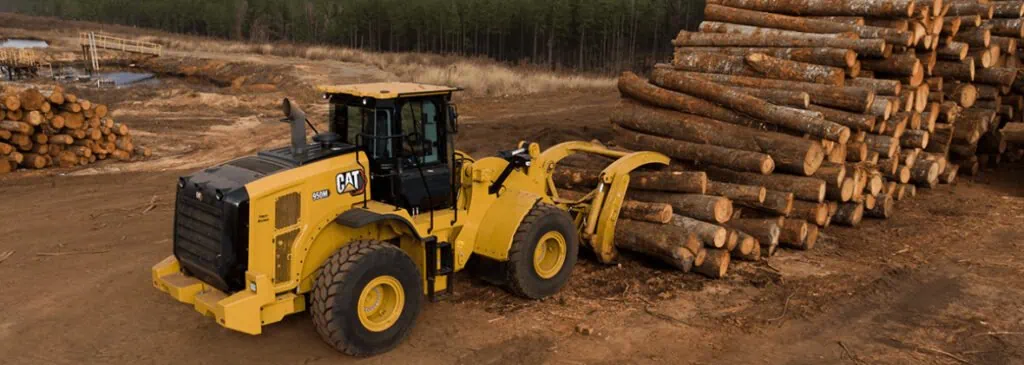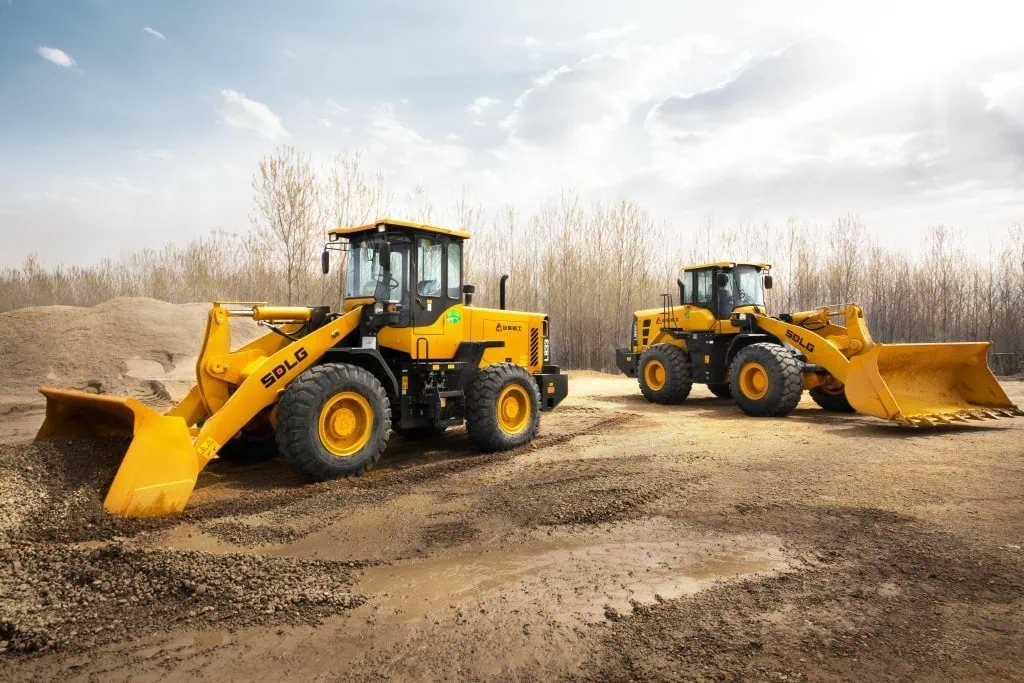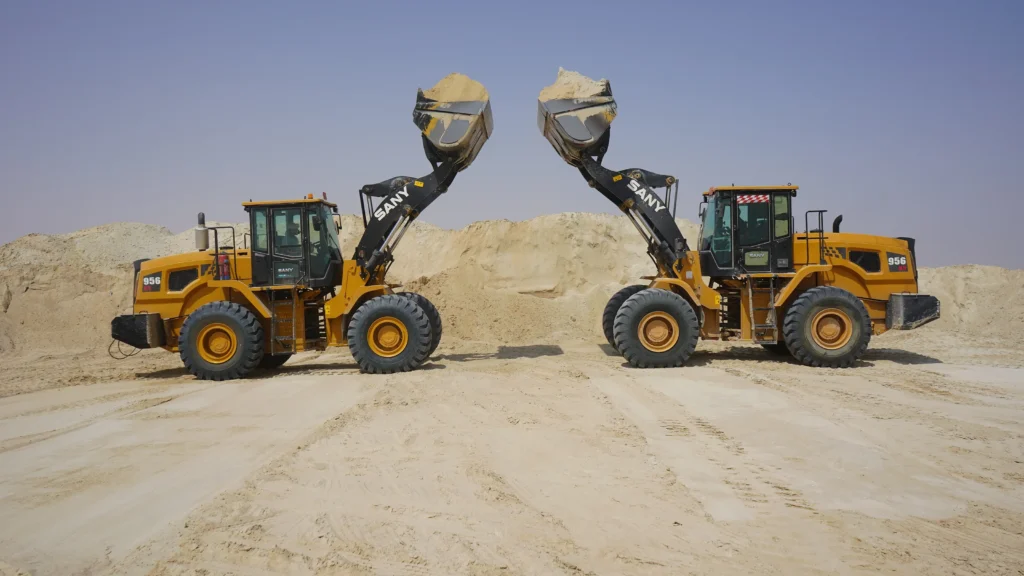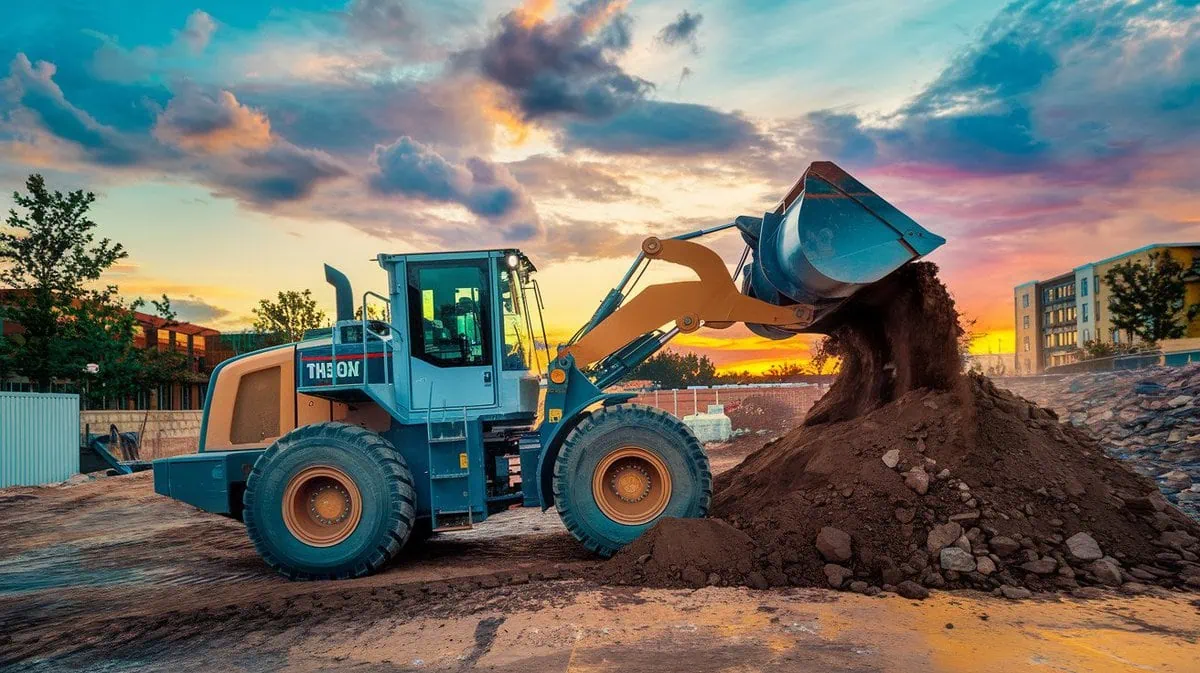Choosing the right used wheel loader for your construction projects can significantly impact both your productivity and budget. By understanding what makes a wheel loader efficient and reliable, you can select the best model for your needs. If you’re looking for power, efficiency, or cost-effectiveness used wheel loader now. This guide will help you understand what to look for, recommend some of the top models and provide key insights into the most trusted brands in the industry.
Top used wheel loaders for construction projects include the CAT 966H, SDLG LG956L, Liugong 856H and Bobcat S130. These models are known for their durability, low maintenance costs, and exceptional performance, making them ideal for demanding construction environments.
Now you have understood the importance of selecting the right wheel loader, let’s dive deeper into why choosing the right used wheel loader can be a smart decision and explore the top models that will fully meet your construction project needs.

Why Choosing the right Used Wheel Loader is important for Your Construction Project?
When it comes to construction machinery, opting for a used wheel loader can be an excellent way to manage your budget while still getting reliable performance. You may wonder if used machines can offer the same efficiency as new ones, and the answer is yes—provided you choose the right model and carefully inspect its condition.
Lower Initial Investment: The primary benefit of choosing a used wheel loader is the significant cost savings. New equipment can be expensive, and a used machine allows you to access a high-quality product without the steep price tag. This can be especially important if you’re working with a tight budget or if you’re managing multiple projects at once.
Proven Performance: Many used wheel loaders are still capable of performing as well as new ones, especially if they’ve been well-maintained. Brands like CAT, Liugong, and SDLG build their equipment to last, meaning that even after years of use, a used machine can still provide top-notch performance. By choosing a reputable brand, you can rest assured that your used loader will meet your needs.
Faster Depreciation: New wheel loaders lose their value rapidly, but used models have already undergone most of their depreciation. This means that when you buy a used loader, you’re getting better value for your investment, with the depreciation already factored into the price.
Availability of Spare Parts: With used loaders from well-established brands, spare parts are usually easy to find. Brands like CAT, Bobcat, and Liugong have extensive service networks and parts availability, ensuring that you can keep your machine in top condition without excessive downtime.
Top How to Inspect a Used Wheel Loader Before Buying?
When you’re in the market for a used wheel loader, ensuring the machine is in good condition is essential to avoid costly repairs down the line. An effective inspection process will help you determine whether the loader will meet your operational needs and provide the best value for your investment. Here’s a comprehensive guide on how to inspect a used wheel loader before making a purchase.
Engine Condition: The Heart of the Loader
The engine is the most crucial part of a wheel loader, and any issues with it can lead to expensive repairs. Here’s how to assess the engine condition:
Check the Oil: Examine the engine oil’s color and texture. Healthy oil should be a translucent amber color. Dark or gritty oil may indicate poor maintenance or internal engine damage. Also, check for any oil leaks around the engine, as this could be a sign of worn seals or gaskets.
Inspect the Coolant Level: Ensure that the coolant reservoir is full. Low coolant levels could indicate a leak in the cooling system, which can lead to engine overheating and long-term damage.
Look for Exhaust Smoke: Start the loader and observe the exhaust. Excessive smoke, especially black or blue smoke, could be an indication of engine problems, such as faulty injectors, worn piston rings, or other major issues.
Listen for Unusual Sounds: While the engine is running, listen for any unusual noises like knocking, rattling, or squealing, which could indicate internal wear or failing components.

Hydraulic System: Ensuring Efficient Lifting Power
The hydraulic system is responsible for lifting and moving the loader’s bucket and materials. A well-functioning hydraulic system is critical to a loader’s performance. Here’s how to inspect it:
Check for Leaks: Hydraulic oil leaks are a common issue on used wheel loaders. Inspect all hydraulic hoses and connections for any visible leaks or signs of oil accumulation. If you notice leaks around the hydraulic lines, it could be a sign of wear or poor maintenance.
Test Hydraulic Functions: Operate the loader’s hydraulic functions, including the bucket tilt, lift, and arm. Pay attention to any sluggish movements or unusual sounds, as these could signal issues with the hydraulic pump, valves, or cylinders.
Inspect the Hydraulic Oil: Just like the engine oil, hydraulic oil should be clean and free of contaminants. Dark, thick, or frothy hydraulic oil can indicate poor maintenance or internal issues within the hydraulic system.
Tires and Wheels: Ensuring Stability and Traction
The tires on a wheel loader are crucial for both stability and traction, especially when working on rough terrain. Inspecting the tires is essential to avoid early replacements that can add extra cost to your purchase.
Check Tire Tread Depth: Inspect the tread on all four tires. Excessively worn treads indicate that the machine has been heavily used and may require tire replacement soon. Ensure that all tires have even wear, as uneven wear can indicate alignment or suspension issues.
Examine for Cuts or Cracks: Look for visible damage to the tires, such as cuts, cracks, or bulges. These can lead to tire blowouts or performance issues under load, requiring costly replacements.
Look for Tire Inflation Issues: Ensure that the tires are properly inflated. Under-inflated or over-inflated tires can cause handling issues, increase wear, and reduce fuel efficiency.

Structural Integrity: Assessing the Loader’s Frame and Chassis
The frame and chassis are the foundation of the wheel loader, supporting the engine, hydraulic system, and other components. Ensuring the loader’s structural integrity is vital to its long-term performance.
Inspect for Cracks or Welds: Inspect the frame and chassis for any visible cracks or signs of welding. Cracks can compromise the strength of the machine, especially under heavy loads. Repaired cracks may be signs of past accidents or overloading.
Check the Bucket Condition: Examine the bucket for any signs of excessive wear, cracks, or dents. A worn-out bucket can indicate the loader has been used inappropriately or for longer than recommended. The bucket should still have a usable shape and should not be excessively deformed.
Look for Rust: While some surface rust can be normal, excessive rust or corrosion can weaken the loader’s frame. Pay special attention to areas around joints, bolts, and welds, as these can be susceptible to rust.
Transmission and Drive System: Ensuring Smooth Operation
The transmission and drive system transfer power from the engine to the wheels, so it’s important to ensure they’re in good working condition to avoid costly repairs later on.
Test the Transmission: While operating the loader, shift through all gears, including forward, neutral, and reverse. Listen for any grinding or hesitation between gears, which could indicate transmission issues. The loader should shift smoothly without any strange noises or jerking movements.
Examine the Axles and Differential: Inspect the axles and differential for any signs of oil leaks or damage. A well-maintained drivetrain will not exhibit any unusual vibrations or excessive noise during operation.
Test the Steering and Braking: Ensure that the steering system operates smoothly without excessive play. Check the brakes for proper function, and test them by driving at low speeds. The brakes should engage firmly and smoothly, without unusual noises or vibrations.

Electrical System: Verifying the Loader’s Electrical Components
The electrical system controls various functions of the loader, including the lights, dashboard, and engine controls. A malfunctioning electrical system can disrupt operations, so thorough inspection is essential.
Test the Battery: Inspect the battery for any signs of corrosion or leaks. If the battery is more than a few years old, ask for the service history and consider replacing it if necessary. A weak or dead battery can lead to operational issues and delays.
Check the Lights and Indicators: Test the headlights, brake lights, and other electrical components, such as the horn, turn signals, and dashboard indicators. Ensure all lights and indicators are fully functional, as these are important for safe operation.
Inspect Wiring and Fuses: Look for frayed or exposed wires and damaged fuses, which could indicate past electrical issues or poor maintenance. Ensure all wiring is securely connected and free from damage.

Maintenance and Service History: Evaluating the Loader’s Past Care
Understanding the loader’s maintenance and service history can give you insight into how well the machine has been cared for and how much work may be needed moving forward.
Request Service Records: Ask the seller for the loader’s service and maintenance records. This will show whether the machine has received regular servicing and help identify any potential recurring issues. A well-documented service history indicates the loader has been cared for properly.
Check for Major Repairs: Be sure to ask if the loader has had any major repairs, such as engine overhauls or transmission replacements. Significant repairs can be a red flag, particularly if the repairs were performed poorly or by an unqualified technician.
Used Wheel Loader Models You Should Consider
Now that you understand the benefits of choosing a used loader, let’s explore some of the best models available. Each of these machines offers a blend of power, efficiency, and value, making them ideal for a wide range of construction projects.

Caterpillar (CAT) 966H – Power and Durability
Caterpillar, or CAT, is one of the leading manufacturers of heavy construction equipment worldwide. With a reputation for reliability, CAT machines are designed to handle the toughest jobs in the most challenging environments. Their commitment to innovation and durability has earned them a loyal customer base across industries like construction, mining, and agriculture.
If you’re looking for a loader that can handle tough, heavy-duty tasks without compromising on performance, the CAT 966H is an excellent choice. Known for its rugged design and exceptional lifting capabilities, this model is trusted by construction professionals worldwide.
The CAT 966H is built for power and endurance, making it a reliable choice for large-scale construction projects. Whether you’re lifting heavy materials, transporting bulk items, or handling tough terrains, this wheel loader will meet your needs. The six-cylinder engine provides excellent torque, allowing the 966H to operate under demanding conditions without sacrificing speed or power. Additionally, the 966H is designed with operator comfort in mind, with a spacious cabin and easy-to-use controls that enhance productivity and reduce fatigue during long shifts. CAT’s widespread service network means that maintenance and parts availability are always within reach, ensuring minimal downtime.

SDLG LG956L – Cost-Effective and Efficient
SDLG, a subsidiary of the Volvo Group, is known for manufacturing durable and cost-effective construction equipment. Based in China, SDLG has established a solid reputation for producing reliable loaders, excavators, and other heavy machinery, often at a lower price point compared to other global brands. SDLG equipment is widely used in developing markets, where performance and cost-effectiveness are paramount.
SDLG’s LG956L is designed to reduce operating costs while still delivering high performance. It features a powerful hydraulic system that provides smooth and reliable control, which is crucial when dealing with large loads and heavy-duty tasks. The loader is known for its fuel efficiency, which helps keep long-term operating costs down—a key consideration for construction firms managing tight budgets. Additionally, the LG956L’s simple design makes it easier to maintain, and parts are readily available, ensuring that the machine stays in top working condition for years to come. This model is especially well-suited for projects where cost-effectiveness is a priority, such as roadwork, site preparation, and material handling.

Liugong 856H – Robust and Low Maintenance
Liugong is one of China’s oldest and most established construction machinery manufacturers, known for producing rugged, reliable equipment that is easy to maintain. With over 60 years of experience, Liugong’s machines are designed to withstand the rigors of the toughest construction sites.
If durability and ease of maintenance are high on your list of priorities, the Liugong 856H is an excellent choice. This wheel loader combines robust performance with a design that simplifies maintenance, making it an ideal solution for high-demand construction environments.
The Liugong 856H is built to endure long hours of operation in harsh conditions. With its reinforced frame and heavy-duty lifting capabilities, this wheel loader excels at moving large loads and handling tough terrains. Its hydraulic system is designed for efficiency, providing smooth and precise control, even in challenging conditions. Liugong is also known for its focus on ease of maintenance, with components that are accessible and easy to service. This feature reduces downtime, ensuring that your machine stays operational for longer periods. If you’re managing multiple construction sites or need equipment that can handle rough terrain, the 856H is a solid choice that combines reliability with low maintenance costs.

Bobcat S130 – Versatile and Compact
Bobcat is a leading brand in compact construction machinery, best known for its skid-steer loaders and compact loaders. Known for their maneuverability and versatility, Bobcat machines are perfect for smaller or tighter spaces, often found on urban construction sites or landscaping projects.
If your construction project requires a machine that can navigate tight spaces without sacrificing power, the Bobcat S130 is the solution. Its compact size, combined with strong lifting and digging capabilities, makes it a versatile option for smaller job sites.
The Bobcat S130 stands out for its compact size and agility, making it perfect for confined spaces like urban construction sites or landscaping projects. With its strong hydraulic system and efficient design, the S130 can handle a range of tasks, from lifting and transporting materials to grading and digging. The loader’s small frame doesn’t limit its power—thanks to its robust engine and efficient hydraulic system, it can perform many of the same tasks as larger machines. Bobcat is also known for its user-friendly design, which makes operating the S130 easy for both experienced and new operators. Additionally, the S130 is simple to maintain, with readily available parts and an easy-to-service design that minimizes downtime.
Summary
Selecting the best used wheel loader for your construction project is crucial for both efficiency and cost-effectiveness. Whether you choose the power of the CAT 966H, the cost-efficiency of the SDLG LG956L, the durability of the Liugong 856H, or the versatility of the Bobcat S130, each of these models brings unique strengths to the table. By carefully considering your project’s specific needs—whether it’s heavy lifting, tight spaces, or low maintenance—you can find a machine that meets your demands and maximizes your investment. We are a leading Chinese supplier of used construction machinery, we have a lot of used wheel loaders in stock now, please contact us for more video and pictures. Hope we can be best partners.






